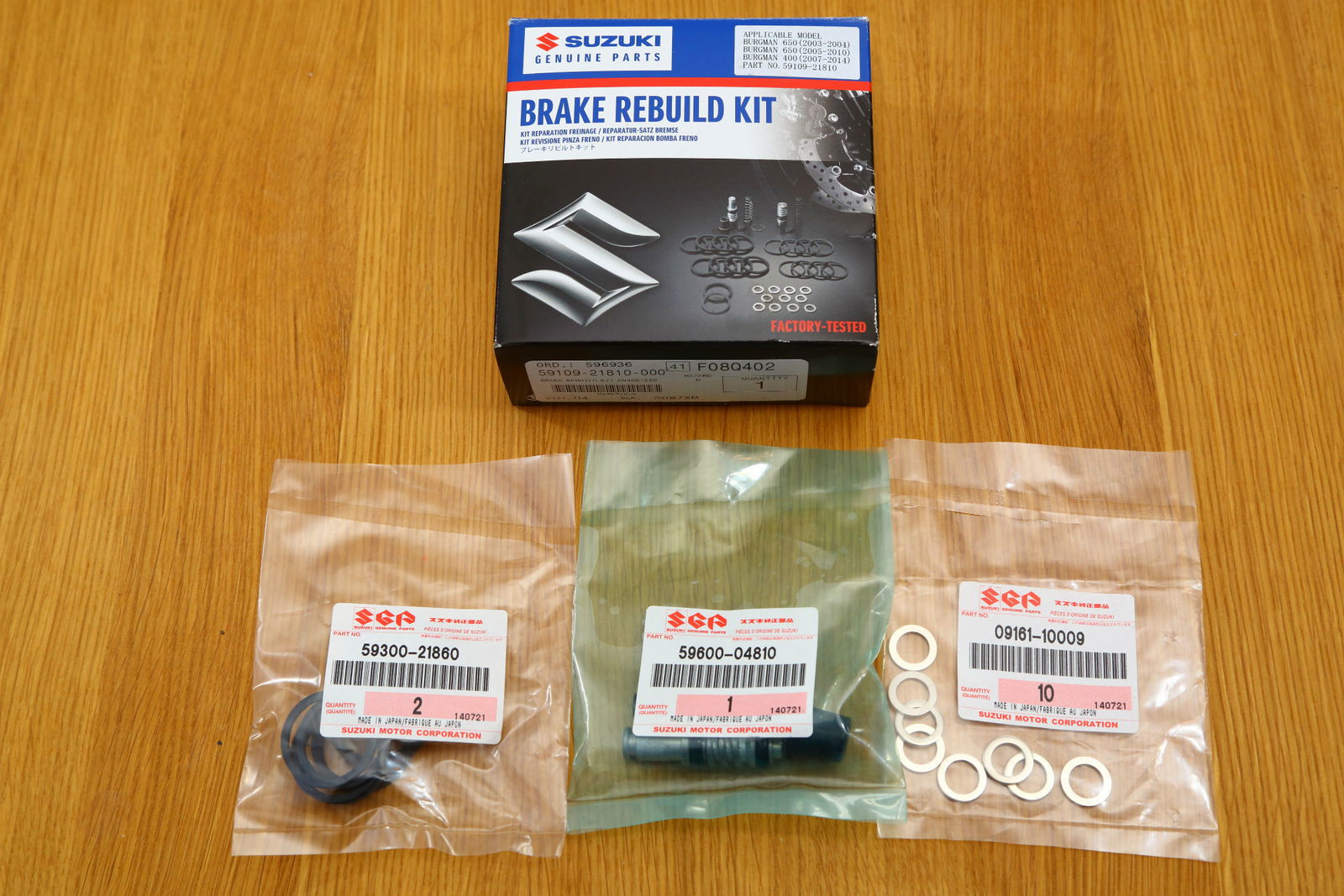How to… service a motorcycle brake master cylinder
Keep old stoppers sharp

Words and pictures by Alan Dowds
BRAKES come in two halves (well, three halves with an ABS system). The bottom half tends to get all the attention in terms of maintenance: pads and calipers are regularly changed, cleaned and primped, hoses are swapped for steel braided chappies, discs get checked for wear. But up top, at the master cylinder on the bar, not much tends to happen. You open it to change the fluid, and if you drop the bike, you'll replace the bent or broken lever.
Check the service manual though, and you'll see that the master cylinder has seals inside that should be checked and changed. It's a simple piston with two rubber seals that runs inside a cylindrical bore – but the seals do wear over time, and replacing them can often sharpen up old, limp stoppers.
Here's how to rebuild a basic brake (or clutch) master cylinder in five easy steps…
1. Get it off
We'll assume you're comfy enough with gentle spannering – so removing the master cylinder shouldn't be a big deal. Loosen the bolt (banjo type) that holds the hose on first: it'll be tight and a bugger to unscrew once off the bars. Watch for leaking brake fluid: there'll be a fair bit, and it's nasty to paint and plastics. Use plenty of kitchen roll or shop towel to catch drips, and wash off any excess quickly with some water. Careful though – don't get water into the brake hose itself.
Next, unbolt the lever. There'll be a nut on the bottom that comes off first. Then unscrew the bolt through the lever pivot. Again, this is easier with it still on the bars. Then loosen the two clamp bolts holding the master cylinder to the bars. Find the brake light or clutch switch connector, disconnect the wires, and the cylinder should just lift away. Secure the brake hose so it's not going to leak fluid anywhere.
Take off the reservoir lid, either a flat cover with two screws, or a round cap that unscrews, and tip out the remaining brake fluid. Now, brake fluid isn't like engine oil – it can be washed away with water, but don't tip it down drains or gutters: store old fluid with your old engine oil and recycle it all together. While we're on the subject, brake fluid isn’t nice for your skin: wear gloves while working with it.
A good old spray with some brake cleaner will remove grime from the outside and blast out any residue at the bottom of the reservoir. Reservoir residue, if you will.
This is one job you don’t want to do on the pavement outside: brakes need to be kept really clean so that no dirt blocks any fluid transfer holes. Clear a spot on your workbench, kitchen worktop or dining table inside, and put down some clean kitchen roll or shop towelling. Lay out the new parts and your old reservoir, together with some circlip pliers, and a small container of fresh clean brake fluid.
Replacement master cylinder seals are almost always an OE factory part deal – there are some pattern options, but we prefer to stick with OE for parts like this. We got a full brake rebuild kit from Suzuki GB, which includes master cylinder and caliper seals, plus washers, all in one handy box. This kit costs about £120 for a Suzuki Burgman 650, and includes all the front and rear rebuild parts you'll need. Suzuki sells them directly online on eBay, or your local dealer will help too.

After all this fuss, removing the piston and seals is pretty simple. There's a little rubber top-hat-shaped cover round the piston end where the lever pushes on it. This pops off with a small screwdriver or pick, revealing a circlip holding the piston in against its spring pressure. Use your pliers to remove the circlip, then the whole shebang just lifts out.
Check inside the bore of the master cylinder for wear, dirt or debris, and give it a clean out with brake cleaner if needed. Watch for grime buildup round where the rubber cover locates and in the circlip groove.
Now, lubricate the new piston with some fresh fluid, then slip it into the bore. Push it in with your thumb, and hook the new circlip into the locating groove. Pop the new rubber seal over the end, and you're done.

The rest is simple enough: reverse the dismantling process! Refit the cylinder to the bars, connect the switch wiring, refit the lever (with a dab of grease on the pivot) and attach the hose.
You'll need to fill up the reservoir with fresh brake fluid and bleed the brakes now of course – and luckily we covered how to do that not so long ago… Click here for our guide to brake bleeding.
Click here for more Visordown how-to guides.

